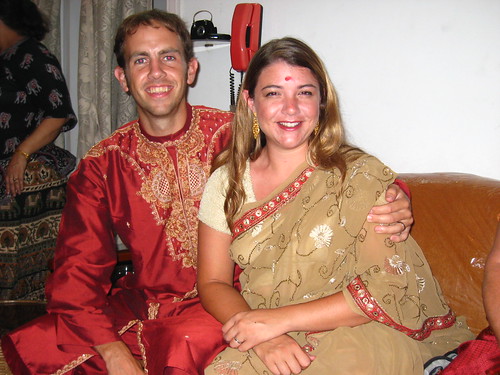While traveling through Asia, I have tried to rectify my deficient knowledge of world history by reading Asian history or historical fiction. No this is not beach reading, but I have never been the type to read about poor beautiful girls in New York trying to find a rich husband. Shogun gave me insight to Japan's rich feudal heritage. In India, the Lewis Fischer's biography of Gandhi and William Dalrymple's The Age of Kali taught me a great deal of Indian history. Thailand has few authors that write about anything except finding oneself, doing drugs, beaches, time in the infamous Bangkok jail, and marrying prostitutes. The real winners combine all 5 in one. Cheng and Eng, a fictional book based on the real Siamese twins, gave me a glimpse of 1800's life on the Mekong in Thailand. Ambitv Gosh's The Glass Palace concentrated more on colonial Burma, India, and Malaysia with a little of Thailand mixed in.
Volumes are written about places where terrible things have happened. I started my breif studies on Cambodian history with First They Killed My Father, by Loung Ung. I tore through this 250 page book in only 6 hours on the ferry from Koh Tao. I highly recommend this to anyone who is interested in a first hand account of what the Khmer Rouge did. In brief, the Khmer Rouge overtook Phenom Pehn in April 1975 and drove the inhabitants of this city and others into countryside work camps. In the following 4 years and 8 months, they enslaved their population in farming camps to fulfill some Utopian communist dream. They summarily executed those with higher education or loyal to the former government. They tortured and killed some 14,000 - 20,000 men, women, and children in a high school in Phenom Pehn now know as S-21 or Tuol Sleung.
Ian and I visited Tuol Sleng Genocide Museum yesterday. It is quite ironic that the tuk-tuk driver's touts to tourists usually start with "hello, want to see the killing fields and S-21?" The class rooms of this sunny high school were turned into between 1 - 30 cells each. Prisoners were kept shackled to the floor and tortured. Like the Nazis, the KR were fastidious about their record keeping. They took photos of each person alive, and many dead which are all shown in the museum. The people were taken to the killing fields, about 15km away, and bludgeoned before being left to die in a mass grave. In Dachau, the Nazi concentration camp which I visited in 1997, the solemn grounds have been able to mellow after 60 years. However, the barbed-wire wrapped Tuol Sleung still has violence in the air. There is a photo exhibit of men and women who worked (likely forced) in the prison. They are still living among the people of Cambodia, many of whom lost loved ones. There is still blood on many of the floors of the cells. The pictures of the main architects, one was Duch who will received a hearing on Monday in the war crimes tribunal, are scribbled with angry Khmer graffiti. There exist the actual tools of torture, including a water-boarding tank. It's nice to know that some of our presidential hopefuls endorse the torture techniques of the Khmer Rouge.
Finally the North Vietnamese, having recently defeated the Americans and South Vietnamese, invaded to end the Khmer Rouge reign in 1979 because the KR were massacring Vietnamese in the Mekong Delta. Sadly, the KH were responsible for the extermination of between 1.4 - 2.2 million Cambodians either directly or through starvation and tens of thousands of Vietnamese in South Vietnam only 4 years and 8 months of their reign.
Henry Kamm was a NYT correspondent in Cambodia from 1970 - the 1990s. He skillfully penned Cambodia: Report from a Stricken Land and answered many of the burning questions I had about the rise, reign, and fall of the Khmer Rouge.
I also highly recommend this book as a thoughtful history and analysis of this dark period in history. It's not exactly beach reading, but that's not what I'm here for.
Check back in a few days for links to pictures I took at Tuol Sleng.
- Nisha
Sunday, December 2, 2007
Subscribe to:
Post Comments (Atom)

No comments:
Post a Comment